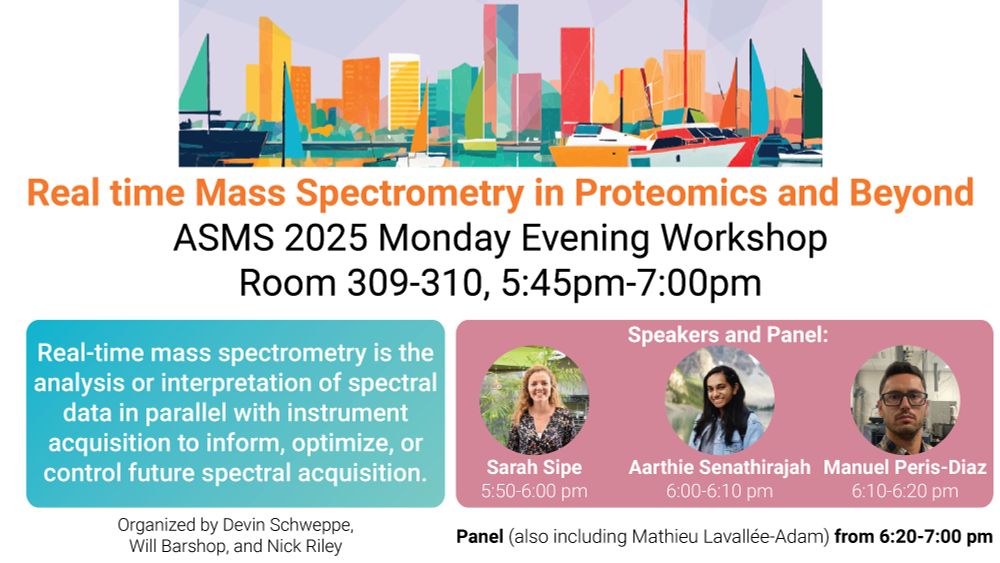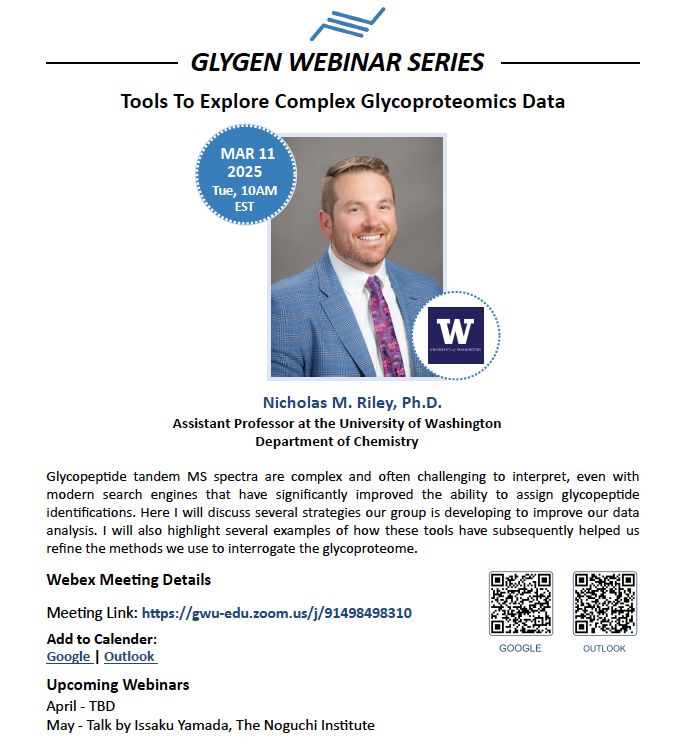Riley Research Group
@riley-research.bsky.social
650 followers
330 following
7 posts
Riley Research Group at the University of Washington, led by @nmriley.bsky.social. Mass Spec, Chem Bio, Cancer, Extracellular (Glyco)biology.
Posts
Media
Videos
Starter Packs
Pinned
Nick Riley
@nmriley.bsky.social
· Nov 13

Autonomous Dissociation-type Selection for Glycoproteomics Using a Real-Time Library Search
Tandem mass spectrometry (MS/MS) is the gold standard for intact glycopeptide identification, enabling peptide sequence elucidation and site-specific localization of glycan compositions. Beam-type col...
pubs.acs.org
Reposted by Riley Research Group
Reposted by Riley Research Group
Reposted by Riley Research Group
Reposted by Riley Research Group
Reposted by Riley Research Group
Reposted by Riley Research Group
Reposted by Riley Research Group
Reposted by Riley Research Group
Reposted by Riley Research Group
Reposted by Riley Research Group
Reposted by Riley Research Group
Nick Riley
@nmriley.bsky.social
· May 8
Reposted by Riley Research Group
Nick Riley
@nmriley.bsky.social
· Apr 18

SEARLE SCHOLARS PROGRAM NAMES 15 SCIENTISTS AS SEARLE SCHOLARS FOR 2025
Members of the new class of Searle Scholars pursue ground-breaking research in chemistry and the biomedical sciences. Each receives an award of $300,000 in flexible funding to support his, her, or …
searlescholars.org
Reposted by Riley Research Group
Nick Riley
@nmriley.bsky.social
· Apr 10
Reposted by Riley Research Group
Nick Riley
@nmriley.bsky.social
· Apr 11
Reposted by Riley Research Group
UW Genome Sciences
@uwgenome.bsky.social
· Apr 11
Reposted by Riley Research Group
Nick Riley
@nmriley.bsky.social
· Apr 10
Reposted by Riley Research Group
Reposted by Riley Research Group
Reposted by Riley Research Group
Reposted by Riley Research Group
Nick Riley
@nmriley.bsky.social
· Mar 26
Reposted by Riley Research Group
Reposted by Riley Research Group
Tanveer Batth
@tsbatth.bsky.social
· Mar 8

Revisiting the Effect of Trypsin Digestion Buffers on Artificial Deamidation
Deamidation of asparagine and glutamine residues occurs spontaneously, is influenced by pH, temperature, and incubation time, and can be accelerated by adjacent amino acid residues. Incubation conditions used for proteolytic digestion in bottom-up proteomic studies can induce significant deamidation that affects results, either knowingly or unknowingly. This has prompted studies into modifications to common trypsin digestion protocols to minimize chemical deamidation, including shorter incubation times and specific lysis buffers. Prior work suggested ammonium acetate at pH 6 to minimize chemical deamidation, but this buffer has compatibility issues with trypsin digestion and common assays (e.g., bicinchoninic acid assays). Here, we re-evaluated former comparisons of Tris-HCl, ammonium bicarbonate, and triethylammonium bicarbonate buffers for the amount of artificial, chemically induced deamidation generated in a standard bottom-up proteomics workflow, and we added an evaluation of three commonly used and biologically compatible buffers, HEPES (4-(2-hydroxyethyl)-1-piperazineethanesulfonic acid), EPPS (3-[4-(2-Hydroxyethyl)piperazin-1-yl]propane-1-sulfonic acid), and PBS (phosphate buffered saline). Our findings show that HEPES exhibited the least amount of artificial deamidation and is a reasonable choice for general proteomic experiments, especially for studies considering N-glycosylation.
pubs.acs.org
Reposted by Riley Research Group
Reposted by Riley Research Group


















